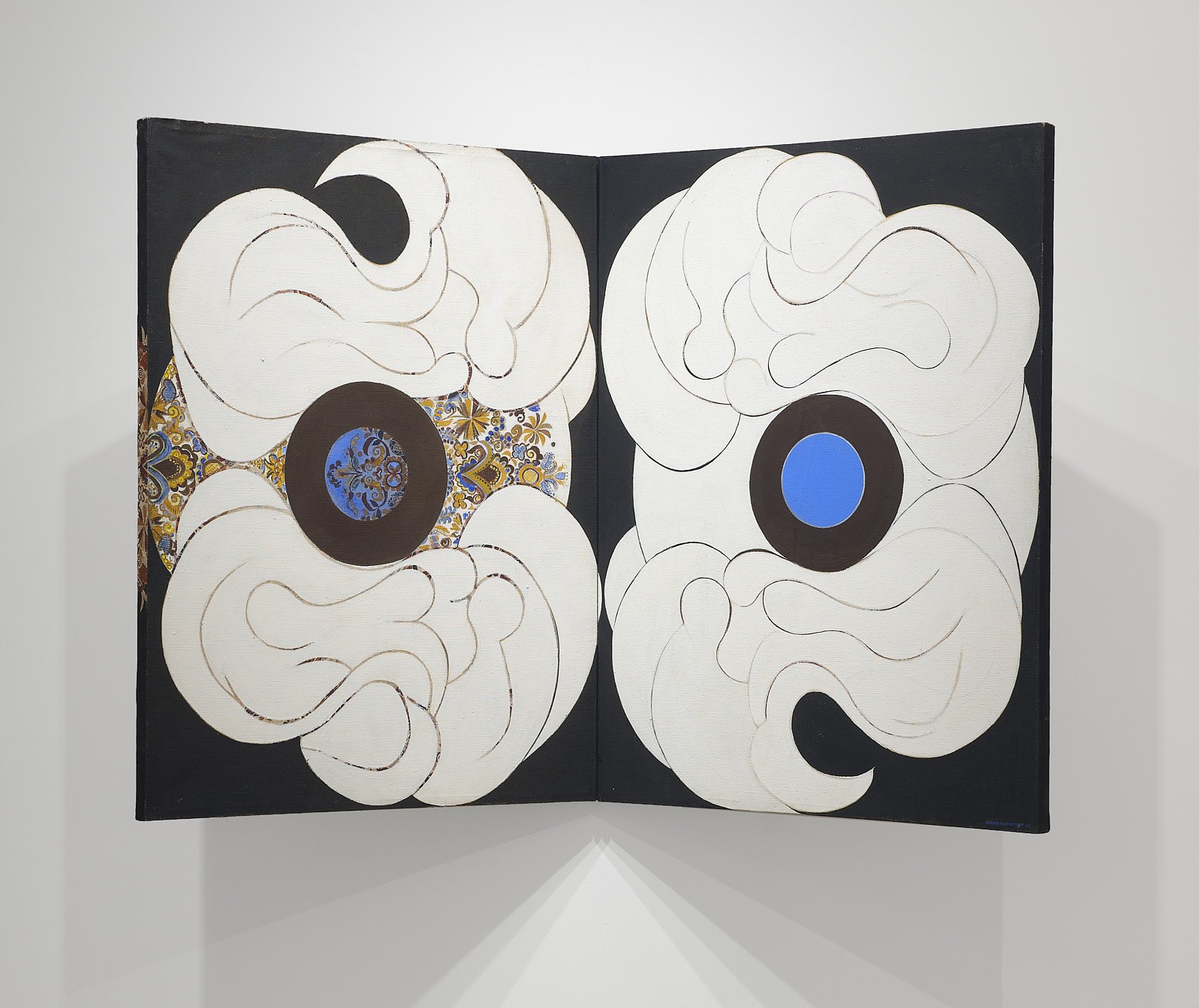First exhibited in 1967 at the John Bolles Gallery, a space known for its avant garde programming, Sonya Rapoport’s Fabric Paintings are strikingly bold shaped canvases and paintings on patterned fabrics and wallpaper. They feature abstract forms that reference women’s bodies, and represent her first experiments with painting on found substrates, both tactics that would feature prominently in later work that explored material culture through a feminist lens.
In the mid 1960s, Rapoport’s daughter had become interested in textiles and quilting. Accompanying her to fabric stores, Rapoport encountered gaudy, commercially printed upholstery fabric that she described as “kinky,” and she set for herself the challenge of making “ostensibly respectable abstractions” on these garish canvases.
Miriam Dungan Cross of the Oakland Tribune reports that Rapoport “had found some fabrics as beautiful as a painting and tried to incorporate them in her work, but found that they were ‘complete statements’ and thus unusable. So she turned to linens, printed with literal flowers in uninteresting colors, obliterating some of the pattern with organic shapes…”
These shaped canvases seemingly owe much to the sculptural excesses and junk-store aesthetics of the Bay Area Funk Art movement. In fact, curator Peter Selz of the Berkeley Art Museum credited Rapoport with suggesting the title “Funk” for his seminal exhibition, which had opened to much acclaim (and factious infamy) in the spring of 1967, a few months before the Fabric Paintings were first shown. However, Rapoport was not labeled a Funk artist–throughout her career she defied inclusion in art historical movements and is best seen as an outsider who used what she needed and moved on to new approaches to artmaking.
Sonya Rapoport with Quatre Heures (1966).
The bold, curvy, geometric forms that Rapoport painted in her Fabric Paintings can be traced back to large scale works on paper with roughly sliced collage elements from 1964. With titles such as Incubation, these feature abstract forms that reference the female form, a fact that was not lost on critics, including the San Francisco Examiner’s Arthur Bloomfield, who referred to them as “floral-sexual blends,” and made much of what he saw as “bosoms and derrieres.”
By the early 1970’s Rapoport would have made these forms central to her practice, creating a set of stencils that she portrayed as a feminist pattern language.












